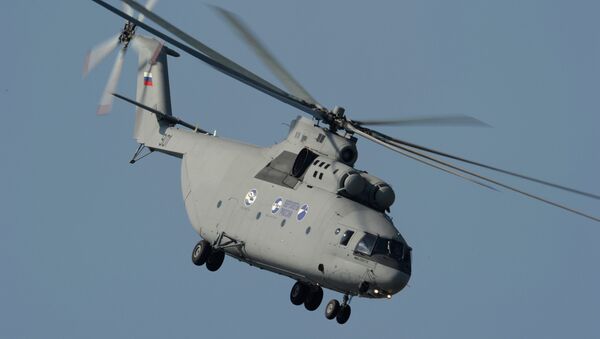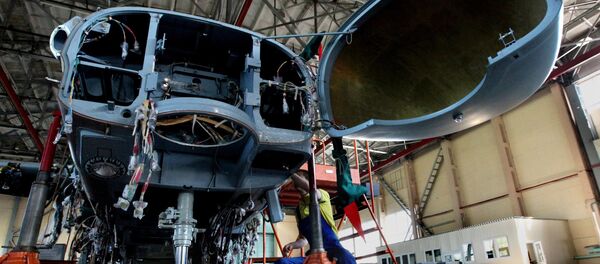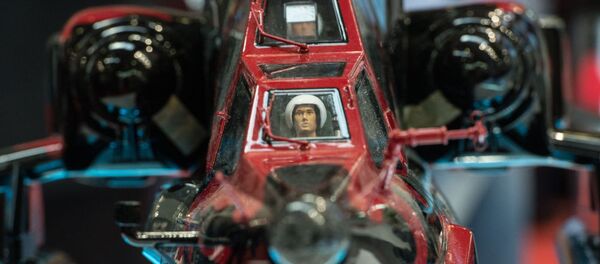Speaking on the occasion of the rollout of the modernized design, Russian Helicopters CEO Andrei Shibitov stated that "Mi-26 helicopters are unparalleled in terms of their flight capabilities, and this modernization significantly expands their potential operational use. I am confident that the Mi-26T2 will see demand, both in Russia and internationally."
The Mi-26T2 features a so-called glass cockpit, which includes five multifunction LCD displays, new control consoles, and upgraded digital communications systems. Onboard video displays offer a clear picture of any cargo which may be attached to the helicopter's external sling during the daytime.
For crew comfort, the new helicopter also features air conditioning and heating systems both in the crew and cargo cabins.
The military Mi-26 and its civilian variant, the Mi-26T have been produced by Rostvertol, a Russian Helicopters-owned plant in Rostov-on-Don, since 1980. Developed by the Mil Moscow Design Bureau during the late Soviet period, the Mi-26T was known worldwide for setting cargo transport records, capable of carrying a cargo of up to 20 tons inside its cabin or on an external sling, or up to 90 personnel. With a cruising speed of 255 km/h, the helicopter has a maximum speed of 295 km/h, and a range of 1,920 km.
The modernization of the MI-26T2 design was carried out through the late 2000s. The first prototype was delivered by Rostvertol in December 2010, after which the design underwent extensive flight testing.




